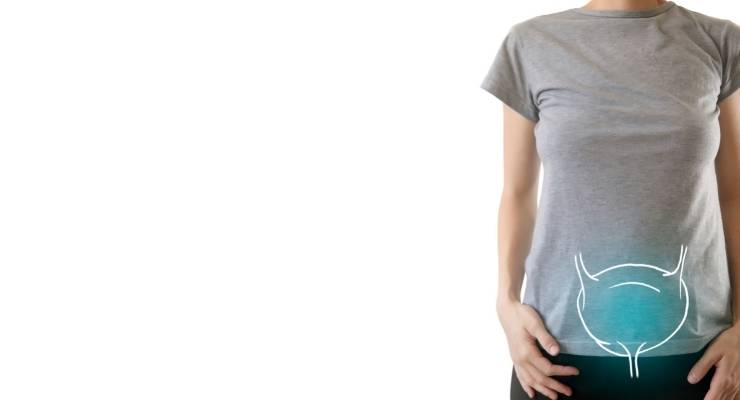08.25.22
An animal study recently established the mechanism of action for Urox, a dietary supplement ingredient marketed by Seipel Group which is patented for its role in attenuating overactive bladder symptoms. Urox is a blend of three herbal extracts evidenced to support bladder health.
Urology researchers at the Medical University of Warsaw, Poland investigated Urox in a self-funded mechanism of action study, appearing in Frontiers in Nutrition, and the results indicated the biochemical and cystometric measures by which the ingredient was able to ameliorate overactive bladder effects.
In the study, researchers investigated the efficacy of Urox in reversing retinyl acetate (RA)-induced overactive bladder (OAB) in rats. The researchers had previously established that this RA-induced OAB model can be reverse with the administration of oxybutynin chloride, a common medication for urinary incontinence and an overactive bladder.
“Direct proof of the action of Urox on the bladder detrusor muscle stability was the ability of Urox to lower the DOI [detrusor overactivity index]. Unstable detrusor contractions in the urine storage period is traditionally used to diagnose OAB,” the authors wrote.
The authors also concluded that there was no diuretic or cardiovascular effect observed in the animal models, and that Urox did not compromise normal voiding. Further, they wrote that Urox was potent in its ability to reverse the biochemical and cystometric changes characteristic of OAB, and that the ingredient could potentially be a reasonable strategy as a future pharmacological method to treat OAB patients.
“This independent Mechanism of Action (MOA) study confirms what I expected when designing the Urox ingredient formula,” said Dr. Tracey Seipel, founder and CEO of Seipel Group. “As a practitioner and formulator, I developed Urox with a holistic approach, taking into consideration the multiple contributing factors for healthy bladder function including the bladder detrusor muscle, pelvic floor muscles, bladder lining, collagen strength, bladder nerve function and normal effects of aging on the bladder. I selected and researched the herbal extracts based on traditional use and my clinical experience, and refined the formula with substantive research, so it’s no surprise that this research verifies my understanding of how Urox works. What is surprising, is that with limited European distribution we had no idea that the Medical University of Warsaw was studying our material. The results could not be more encouraging for the future of Urox.”
“Healthy bladder control is important at all ages, for both men and women, and especially in later years. Until we, or someone close, are affected, we do not appreciate how poor bladder control can drastically, negatively impact quality of life,” Seipel continued.
To date, there have been two clinical trials on Urox use in adults, published in 2006 and 2018, as well as a study on Urox’s ability to reduce bedwetting in children. The herbals, a blend of Lindera, Horsetail, and Cratevox three-leaf caper, are wild-crafted, pesticide-free, and allergen-safe, and the extracts meet five levels of standardization, are extracted by a proprietary process, and are non-toxic at two hundred-times the daily dose.
Urology researchers at the Medical University of Warsaw, Poland investigated Urox in a self-funded mechanism of action study, appearing in Frontiers in Nutrition, and the results indicated the biochemical and cystometric measures by which the ingredient was able to ameliorate overactive bladder effects.
In the study, researchers investigated the efficacy of Urox in reversing retinyl acetate (RA)-induced overactive bladder (OAB) in rats. The researchers had previously established that this RA-induced OAB model can be reverse with the administration of oxybutynin chloride, a common medication for urinary incontinence and an overactive bladder.
“Direct proof of the action of Urox on the bladder detrusor muscle stability was the ability of Urox to lower the DOI [detrusor overactivity index]. Unstable detrusor contractions in the urine storage period is traditionally used to diagnose OAB,” the authors wrote.
The authors also concluded that there was no diuretic or cardiovascular effect observed in the animal models, and that Urox did not compromise normal voiding. Further, they wrote that Urox was potent in its ability to reverse the biochemical and cystometric changes characteristic of OAB, and that the ingredient could potentially be a reasonable strategy as a future pharmacological method to treat OAB patients.
“This independent Mechanism of Action (MOA) study confirms what I expected when designing the Urox ingredient formula,” said Dr. Tracey Seipel, founder and CEO of Seipel Group. “As a practitioner and formulator, I developed Urox with a holistic approach, taking into consideration the multiple contributing factors for healthy bladder function including the bladder detrusor muscle, pelvic floor muscles, bladder lining, collagen strength, bladder nerve function and normal effects of aging on the bladder. I selected and researched the herbal extracts based on traditional use and my clinical experience, and refined the formula with substantive research, so it’s no surprise that this research verifies my understanding of how Urox works. What is surprising, is that with limited European distribution we had no idea that the Medical University of Warsaw was studying our material. The results could not be more encouraging for the future of Urox.”
“Healthy bladder control is important at all ages, for both men and women, and especially in later years. Until we, or someone close, are affected, we do not appreciate how poor bladder control can drastically, negatively impact quality of life,” Seipel continued.
To date, there have been two clinical trials on Urox use in adults, published in 2006 and 2018, as well as a study on Urox’s ability to reduce bedwetting in children. The herbals, a blend of Lindera, Horsetail, and Cratevox three-leaf caper, are wild-crafted, pesticide-free, and allergen-safe, and the extracts meet five levels of standardization, are extracted by a proprietary process, and are non-toxic at two hundred-times the daily dose.




























